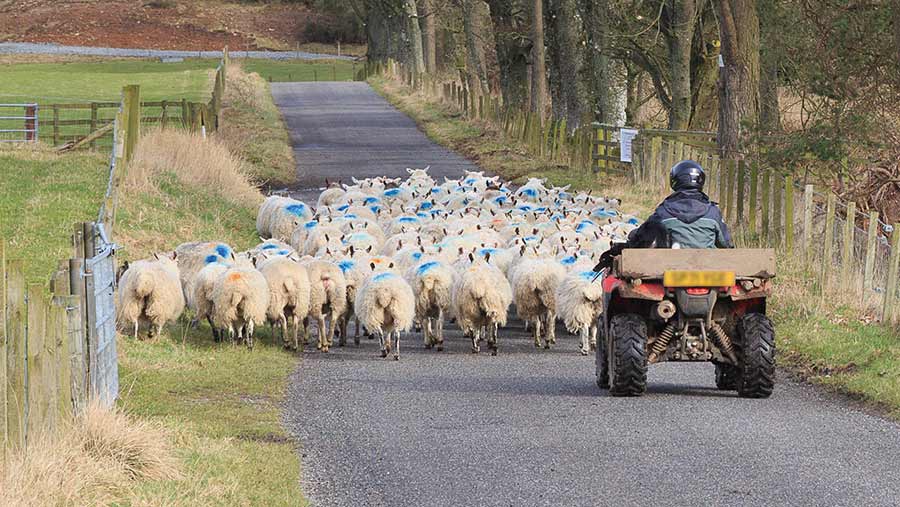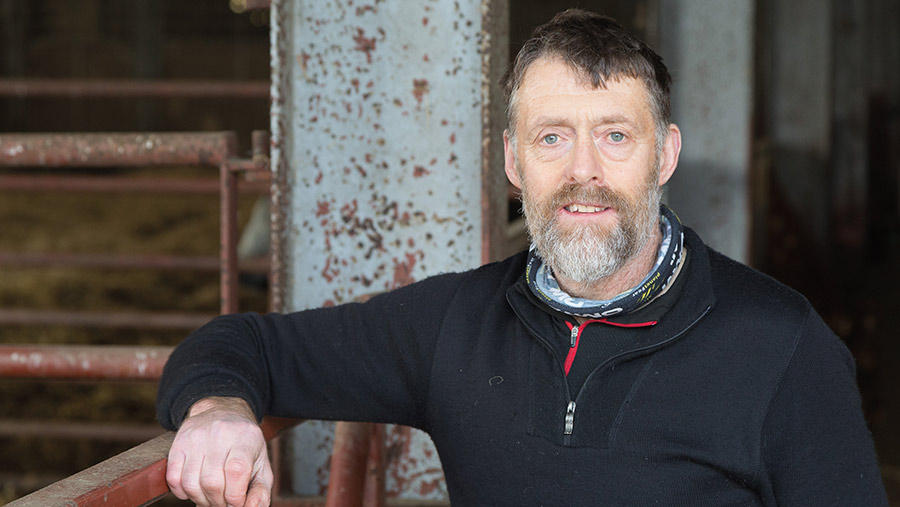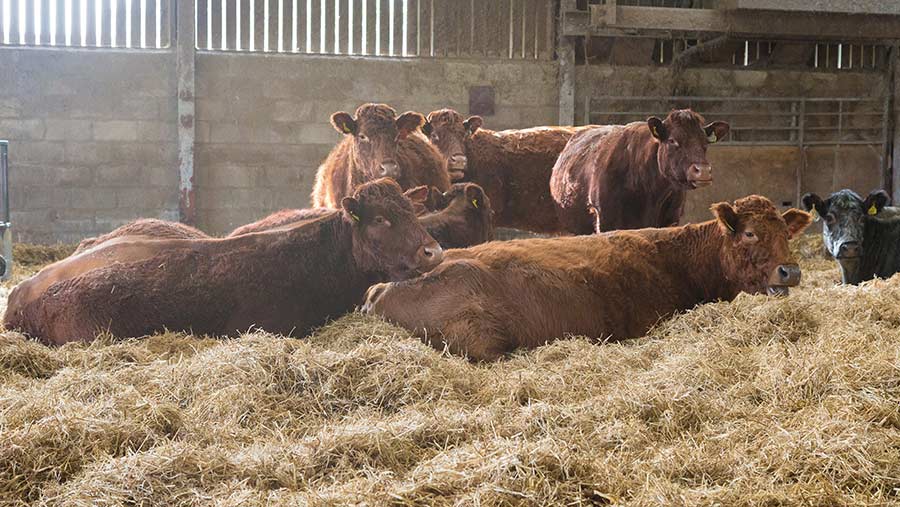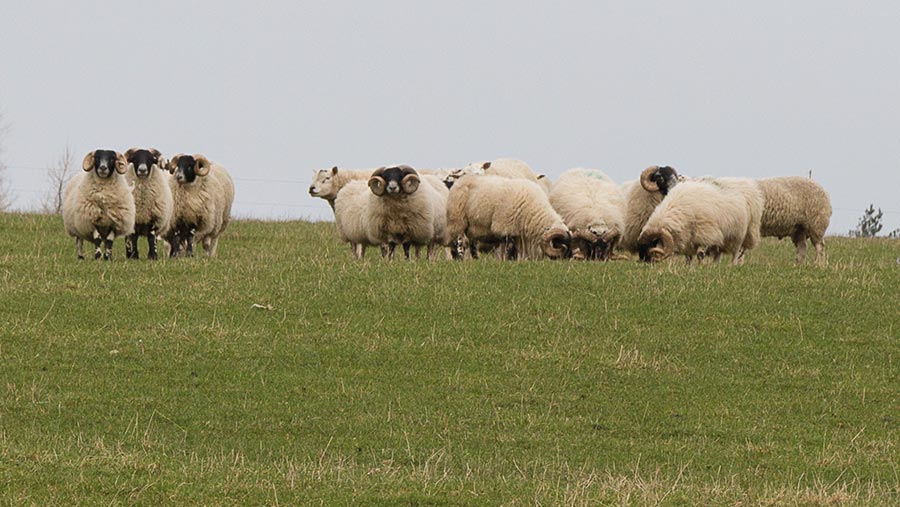How an upland farm is adapting to unpredictable seasons
 © MAG/Judith Tooth
© MAG/Judith Tooth Flexible grazing, stores of good-quality silage and better ewe body condition are among measures used to mitigate against increasingly unseasonal weather at a research farm in the Grampian foothills.
Glensaugh research farm is part of the James Hutton Institute and home of its Climate-Positive Farming Initiative.
“We’re living with climate change,” says Donald Barrie, farm manager of the 1,000ha (2,471-acre) farm for the past 20 years.
“Instead of winter lasting from December to February, it now usually kicks in from early March and runs until May,” he says.
See also: How good grass management can cut costs by up to £40,000/year
Farm facts: Glensaugh Research Station, Lawrencekirk

Donald Barrie © MAG/Judith Tooth
- 1,000ha (2,471 acres) dominated by acid moorland, with 50ha (124 acres) of productive improved grassland, rotationally grazed, and 100ha (247 acres) of marginally improved grassland
- 300 Scottish Blackface ewes on dry heath and 400 cross-breds, typically Scotch Mules in lamb to Texel, on lower ground, with finished lambs mainly sold at Forfar
- Herd of 40 spring-calving Luing suckler cows; increasing numbers to 50
- 100 red deer hinds on fenced areas of dry heath
- 170ha (420 acres) woodland, mostly planted in recent years
- Small area of agroforestry established 35 years ago, and further 1.5ha (4 acres) planned
Grass was growing in January this year, so Mr Barrie took some of the ewes off their winter diet and rotated them round the paddocks for a fortnight, saving on conserved feed.
This can then be fed beyond lambing in April if needed – a scenario that was “almost unheard of” previously, except in 2013 when there was a severe winter storm in March.
He knows from experience that having reserves of silage is far preferable to buying it in.
When the farm suffered a disastrous late winter in 2021 and ran out of silage, there was plenty of baled silage to be bought, but the quality was poor.
“The problem became quite acute,” he says. “We were plate-metering, but [growth] levels were minimal. So, we had hunger, failure of milk supply, mastitis, dead lambs…
“The point is, the weather has become less predictable and more unseasonal. We can have a horribly wet and late spring or get a spring drought with excessively cold night temperatures and dried out pastures.”

© MAG/Judith Tooth
Adaptation
To build resilience and insure against these extremes, Mr Barrie has adapted management at Glensaugh in three ways:
- To ensure ewes have a bit of extra fat, target body condition score (BCS) post-scanning is now slightly higher, at about 3.0, rather than 2.5, which translates into extra milk
- Careful grassland management with rest periods to avoid overgrazing
- Making good-quality silage with a long shelf-life to get stock through the winter.
“As hill farmers, we’re not making dairy-quality silage – for us, a metabolisable energy of 11MJ/kg dry matter is quite good, with a digestibility value of 70%. Our cattle and sheep thrive on this,” he says.
“[However,] the protein is never as high as we would like because silage-making is a compromise here.
“If we were making two cuts, we would be okay, but we are making only one cut because we graze before shutting up for silage and we need to graze aftermaths.”
Great care is taken when covering the silage clamp, pit losses are very low and there is never any effluent, he adds.
Making good silage is all part of using energy more efficiently, says Mr Barrie.
Other mitigation measures include replacing bracken with oak trees to mop up nutrients and some of the greenhouse gas emissions produced and substituting some of the farm’s hydrocarbon inputs with green hydrogen power (see “Green hydrogen power at Glensaugh”, below).
Reseeding
Fields used to be reseeded after seven years but taking fields out of production always left the farm short of grass for silage-making and for midsummer grazing.
In addition, the window for reseeding is quite short and all the land is sloping, creating a risk of soil erosion in a summer storm.
Mr Barrie was also “disinclined” to use a plough if there was a viable alternative, so instead is focusing on:
- weed control to prolong sward life, using a knapsack sprayer for spot-spraying
- rejuvenating damaged swards.
“In fact, the more damaged the sward is, the more it will respond to overseeding. The challenge is how to add diversity to the sward,” he says.
“If you simply drop seed into a quite healthy sward, it won’t take. You have to do intentional damage to the sward.”
Late last summer, the James Hutton Institute trialled a machine that injected jets of steam to cause short-term damage to a sward before it was overseeded in strips.
“The result was similar in appearance to winter frost damage, but it is too early to tell how effective the treatment was. “It’s why we’re here – to try things out,” he says.

© MAG/Judith Tooth
Fertiliser
It is tempting in paddock grazing systems to increase nitrogen (N) applications, says Mr Barrie. Even with hikes in fertiliser prices, you still get your money back, and more.
He has settled on about 30kg/ha of N at the beginning of April, and another 60kg/ha on silage ground in mid-May. This leaves some in store to apply to individual paddocks if needed.
“If the season goes well and we start selling lambs in July, there is less need to use more fertiliser.”
Straw is bought in from farms 15 miles away, and muck is composted and spread on grass in a “drip-feed” fashion during the summer at a rate of 5t/ha after grazing.
Lamb production
The farm is switching from bought-in Scotch Mules to home-bred white-faced Logies from Inverurie-based Logie Durno.
These tend to produce fewer lambs (170-180% lambing percentage, compared with 190-195% for the Mules) but they are hardier and will have a longer flock life.
“We’re moving to a slightly lower-input, lower-output system because labour is scarcer,” explains Mr Barrie.
Green hydrogen power at Glensaugh
Part of the Climate-Positive Farming Initiative at Glensaugh is a green hydrogen power demonstration project.
Funded by the Scottish government’s Just Transition Fund, the aim of HydroGlen is to explore the potential for green hydrogen to displace the use of fossil fuels in farming communities.
To produce green hydrogen, an energy source such as wind or sun is used to split water into hydrogen and oxygen. The hydrogen is then stored ready for use.
“It’s early days, but already we have had great interest from a range of farmers and farmer co-operatives,” says HydroGlen’s project leader and senior scientist at the James Hutton Institute, Alison Hester.
The aim is to have a hydrogen fuelling station, using easily transportable Calor gas-type bottles, and a battery electric vehicle fuelling station, to allow farms to run a mix of electric- and hydrogen-fuelled vehicles as suits them best, says Prof Hester.
“This gives maximum flexibility into the future as technologies for both these types of vehicles continue to develop.”
